The texture is one of the fundamental elements of art, and it can play a significant role in the overall impact of a piece. The texture is an essential part of any artist’s artwork.
In art, texture refers to the surface quality of an object or artwork that can be seen and felt. It adds depth, dimensionality, and visual interest to a work of art. There are two general types of texture tactile texture and visual texture. Understanding texture and how to use it in your art can help you create dynamic and engaging pieces that connect with your viewers on a deeper level. Read on to explore texture and learn about our top 10 masterpieces that show what it means to use texture in art.
Table of Contents
- Types Of Texture In Art
- Our Top 10 Famous Paintings With Texture In Art
- “Starry Night” by Vincent Van Gogh (1889)
- “The Scream” by Edvard Munch (1893)
- “The Persistence of Memory” by Salvador Dali (1931)
- “Girl with a Pearl Earring” by Johannes Vermeer (1665)
- “The Birth of Venus” by Sandro Botticelli (1485)
- “Water Lilies” by Claude Monet (1916)
- “The Kiss” by Gustav Klimt (1908)
- “The Night Watch” by Rembrandt van Rijn (1642)
- “Les Demoiselles d’Avignon” by Pablo Picasso (1907)
- “The Starry Night Over the Rhone” by Vincent Van Gogh (1888)
- What Every Artist Can Learn From Texture And These Masterpiece Paintings
- Frequently Asked Questions
- Related Questions
Types Of Texture In Art
There are two main types of texture in art: tactile texture and visual texture. Though they may have some similarities, they also have unique differences.
Tactile Texture Is Physical Texture
Tactile texture is the physical texture of an object. It is how a surface feels when touched, such as the rough texture of sandpaper or the smooth texture of glass.
In art, tactile texture can be achieved by adding materials like sand, sawdust, or even string to the surface of a painting or sculpture.
Visual Texture Is The Illusion Of Texture
On the other hand, visual texture is the illusion of texture created by using color, line, and shape. It is gives an illusion of texture, even though there is no actual texture on the surface.
Visual texture can be created through cross-hatching, stippling, or layering techniques.
Our Top 10 Famous Paintings With Texture In Art
For centuries, great artists have been using texture as a way to show depth in their art. Many of these artists have paved the way for the rest of us to show the texture in our artwork.
Here are 10 of our top picks and artists who used texture and how they used it:
“Starry Night” by Vincent Van Gogh (1889)
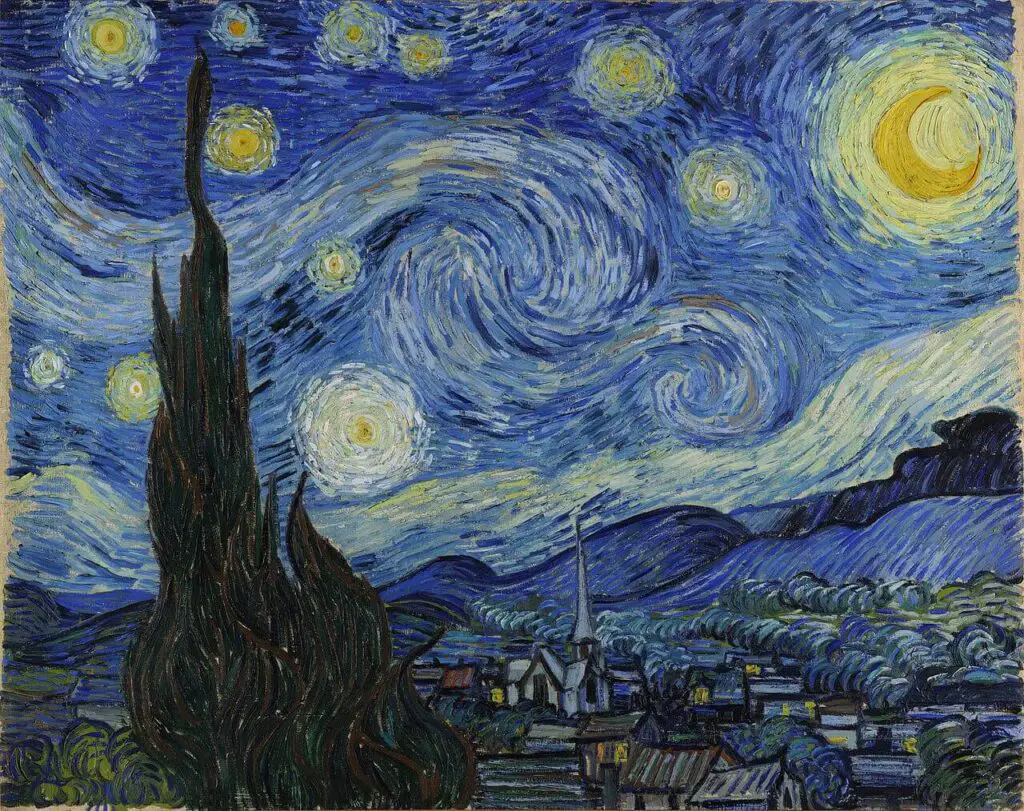
Van Gogh’s “Starry Night” is an iconic example of texture in art. The thick impasto brushstrokes he used to depict the swirling night sky create a tactile texture that draws the viewer in and makes them feel like they are standing in the middle of the painting.
“The Scream” by Edvard Munch (1893)
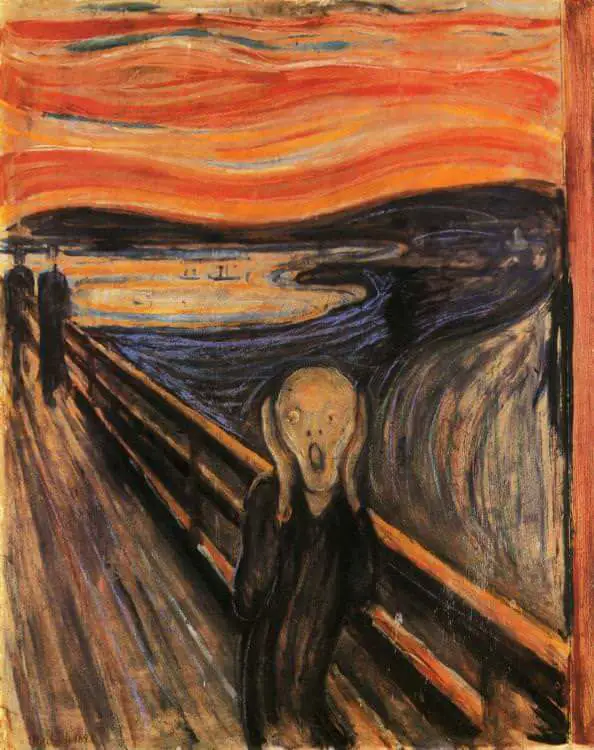
Munch’s “The Scream” uses bold, swirling brushstrokes to create a sense of anxiety and chaos. The texture of the painting adds to the feeling of unease, making it one of the most iconic and recognizable works of art in history.
“The Persistence of Memory” by Salvador Dali (1931)
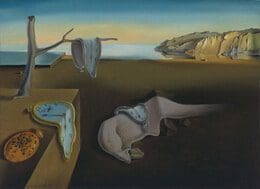
Dali’s “The Persistence of Memory” features a dreamlike landscape filled with melting clocks and surreal imagery. The texture of the painting adds to the dreamlike quality of the scene, creating a sense of disorientation and confusion.
“Girl with a Pearl Earring” by Johannes Vermeer (1665)

Vermeer’s “Girl with a Pearl Earring” is a masterpiece of realism. The intricate details of the girl’s hair, clothing, and jewelry create a texture that brings her to life on the canvas.
“The Birth of Venus” by Sandro Botticelli (1485)

Botticelli’s “The Birth of Venus” uses delicate brushstrokes and fine details to create a sense of ethereal beauty. The texture of the painting adds to the otherworldly quality of the scene, making it one of the most famous and beloved works of art in history.
“Water Lilies” by Claude Monet (1916)

Monet’s “Water Lilies” is a series of paintings that depict the peaceful, serene beauty of a pond filled with lily pads. The texture of the painting adds to the sense of tranquility, making it a popular choice for those seeking a calming influence in their art.
“The Kiss” by Gustav Klimt (1908)

Klimt’s “The Kiss” uses gold leaf and intricate patterns to create a sensual texture. The painting celebrates beauty and passion, and the texture adds to the feeling of opulence and luxury.
“The Night Watch” by Rembrandt van Rijn (1642)
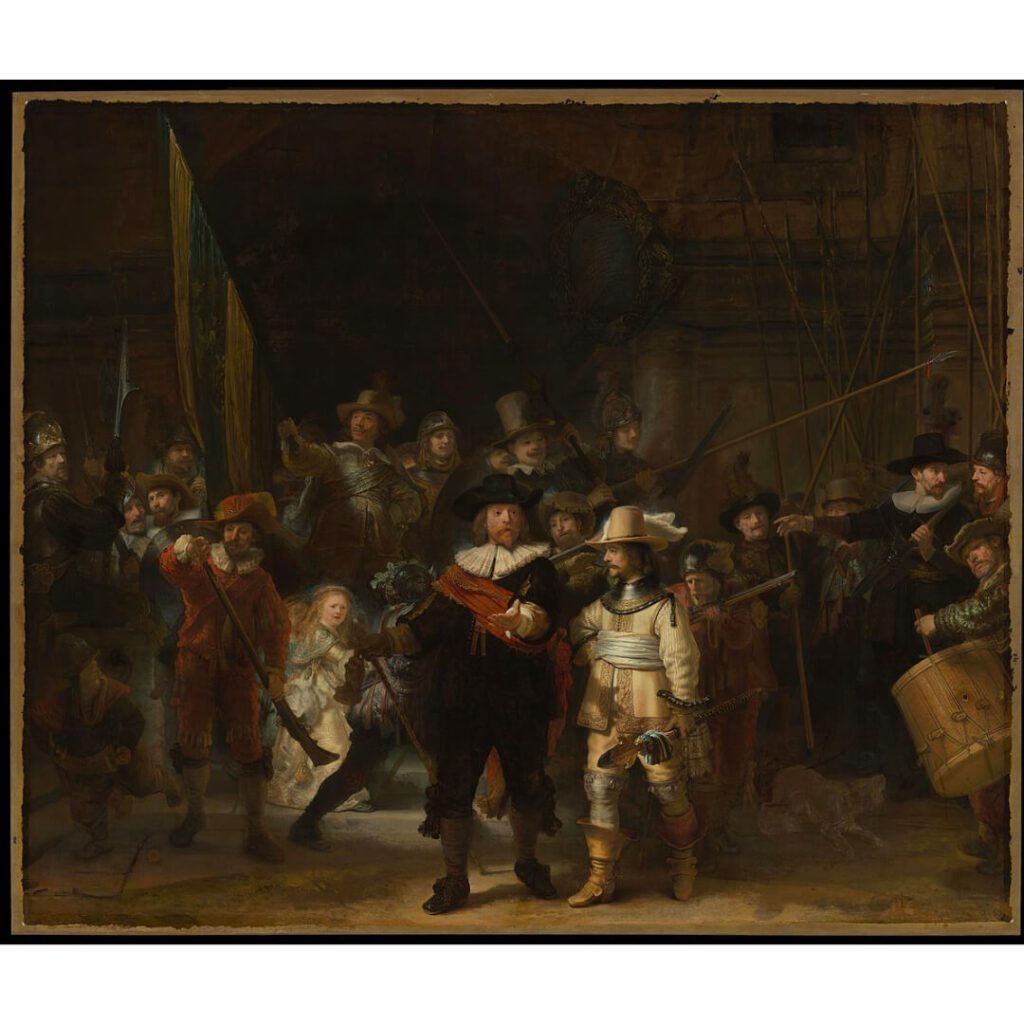
Rembrandt’s “The Night Watch” is a baroque painting masterpiece depicting a group of militiamen. The painting is known for its dramatic use of light and shadow, as well as the intricate details of the clothing and armor worn by the soldiers.
The texture of the painting adds to the feeling of richness and depth, making it one of the most important and influential works of art in history.
“Les Demoiselles d’Avignon” by Pablo Picasso (1907)
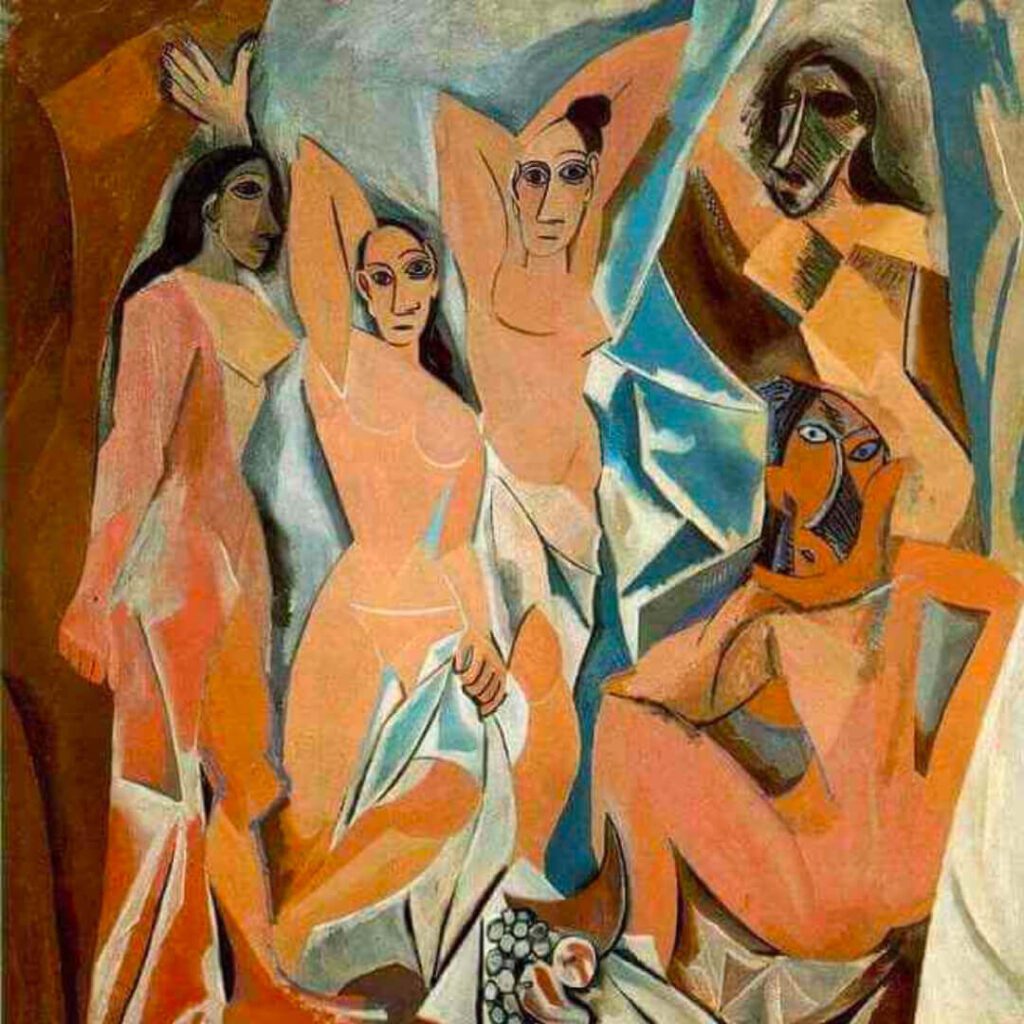
Picasso’s “Les Demoiselles d’Avignon” is a groundbreaking cubism work featuring five nude women in a fractured, geometric style. The texture of the painting adds to the sense of fragmentation and dislocation, making it one of the most innovative and influential works of art of the 20th century.
“The Starry Night Over the Rhone” by Vincent Van Gogh (1888)
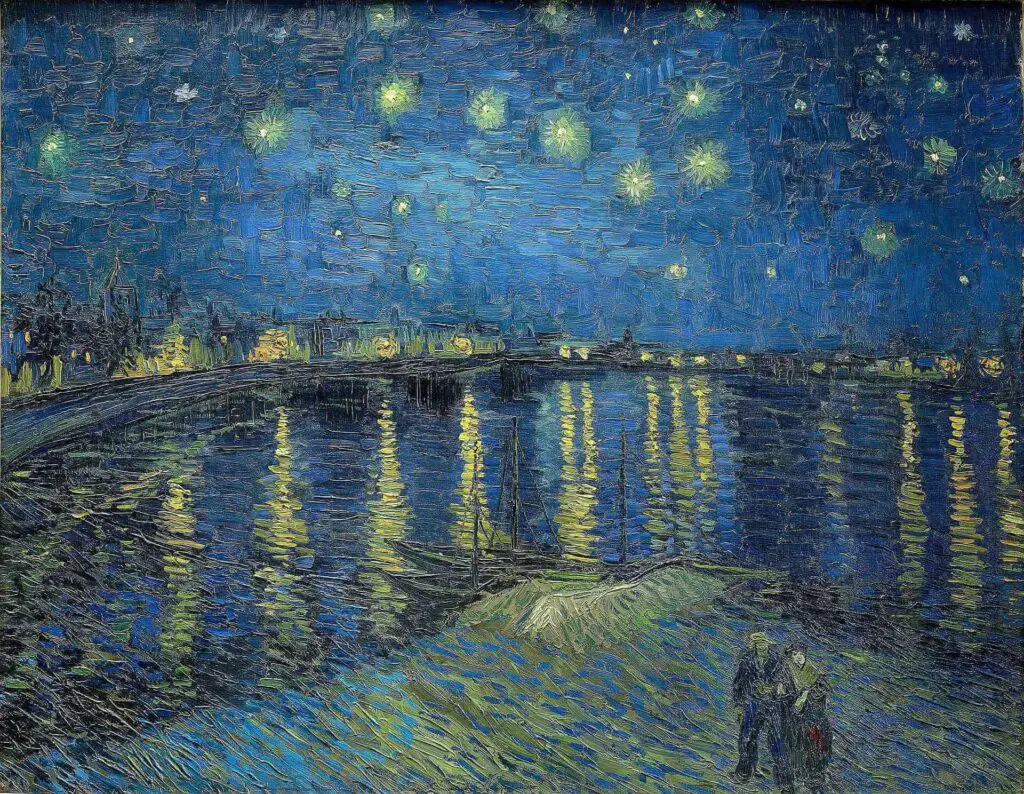
Van Gogh’s “The Starry Night Over the Rhone” is another example of his mastery of texture in art. The painting features bold, swirling brushstrokes that create a sense of movement and depth, making it one of history’s most beloved and recognizable works of art.
What Every Artist Can Learn From Texture And These Masterpiece Paintings
These famous paintings demonstrate the power of texture in art. Whether it’s the tactile texture of Van Gogh’s impasto brushstrokes or the visual texture of Picasso’s fractured forms, texture can add depth, dimensionality, and emotional impact to your work.
Artists can learn from these paintings by studying the techniques used to create texture and experimenting with them. Artists can create tactile textures using sand, sawdust, or strains on their canvases.
Cross-hatching, stippling, or layering can create visual texture that adds interest and depth to their work.
Texture is an essential element of art that can transform a two-dimensional surface into a dynamic, engaging work of art. By understanding the different types of textures and studying the techniques used in famous paintings, artists can harness texture’s power to create truly memorable and impactful works.
Anita Louise Art is dedicated to art education, great artists, and inspiring others to find and create their art. We love art that uplifts and inspires. #ArtToMakeYouSmile! #ArtToMakeYouHappy!
If you want to see any of my art, you can find out more by clicking here. If you are interested in what inspires me and my paintings, you can discover more by clicking here.
We have a free newsletter and would love you to be part of our community; you can subscribe to the newsletter by clicking here. I would be happy to talk to you if you have any questions. You can reach me, Anita, by clicking here.
Subscribe to our Anita Louise Art YouTube Channel with great videos and information by clicking here.
Join us for our podcast “5 Minutes With Art.” Spend just 5 minutes a week with us to discover and learn about great art and artists. You can find out more about our podcast by clicking here.
Frequently Asked Questions
What is texture in art, and how does it contribute to the overall impact of a piece?
Texture in art refers to the surface quality of an object or artwork. It can be both seen and felt, adding depth and dimensionality to a work of art. Understanding and effectively utilizing texture can enhance the overall impact of a piece, making it more engaging for viewers.
What are the two general types of texture in art, and how do they differ?
The two general types of texture in art are tactile texture and visual texture. Tactile texture refers to the physical feel of a surface, while visual texture is the illusion of texture created through artistic techniques such as shading and brushstrokes.
How does texture contribute to the sensory experience of art?
Texture engages the sense of touch visually, allowing viewers to experience a piece on a sensory level. It adds a tangible quality to the artwork, making it more immersive and memorable.
Why is texture considered a fundamental element of art?
Texture is fundamental because it adds richness and complexity to artistic expression. It provides artists with a versatile tool to convey emotions, depth, and visual interest in their creations.
How can artists effectively use texture to create dynamic and engaging pieces?
Artists can use texture intentionally by experimenting with different materials, techniques, and tools. Varying textures within a piece can create visual interest and guide the viewer’s attention.
Can you provide examples of famous artworks that showcase the effective use of texture?
Explore masterpieces like Van Gogh’s “Starry Night” or Rembrandt’s “The Storm on the Sea of Galilee” to witness how artists skillfully incorporated texture to enhance the visual impact of their works.
How does texture contribute to the storytelling aspect of art?
Texture can convey the physical qualities of objects within a narrative, enhancing the storytelling aspect of art. For example, rough textures may evoke a sense of hardship, while smooth textures can suggest calmness.
Are there any historical movements or periods that particularly emphasized the use of texture in art?
Some art movements, such as Impressionism and Abstract Expressionism, placed a significant emphasis on texture. Artists from these periods experimented with brushstrokes, palette knife techniques, and unconventional materials to create unique textures.
Related Questions
What Was The Focus Of Renaissance Art?
The focus of Renaissance art was on the classics of Greek and Rome, humanist philosophy, and the study of the human figure. Realism was also an essential part of renaissance art. The great artists of the Renaissance also became great anatomists and studied human beings.
By clicking here, you can learn more by reading What Was The Focus Of Renaissance Art?.
What Is The Importance Of Art From The Renaissance Period?
Renaissance art is essential as it was a time of rebirth and discovery. Artists like Leonardo da Vinci, Michelangelo, and Raphael were at the forefront of that change, creation, and discovery. Renaissance art has influenced art and artists for many centuries and continues to influence artists today.
By clicking here, you can learn more by reading What Is The Importance Of Art From The Renaissance Period?.
21 Top Renaissance Artists And Their Works Of Art
When we speak of top Renaissance artists, we think of the trinity of artists like Leonardo da Vinci, Michelangelo, and Raphael. But besides these three artists, many other influential Renaissance artists remain essential.
By clicking here, you can learn more by reading 21 Top Renaissance Artists And Their Works of Art.


